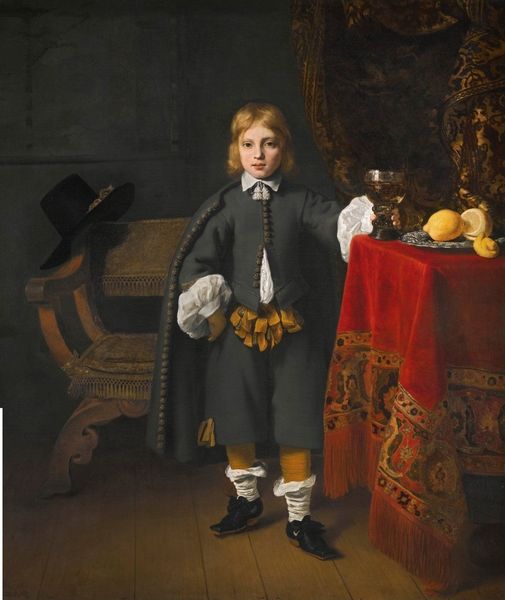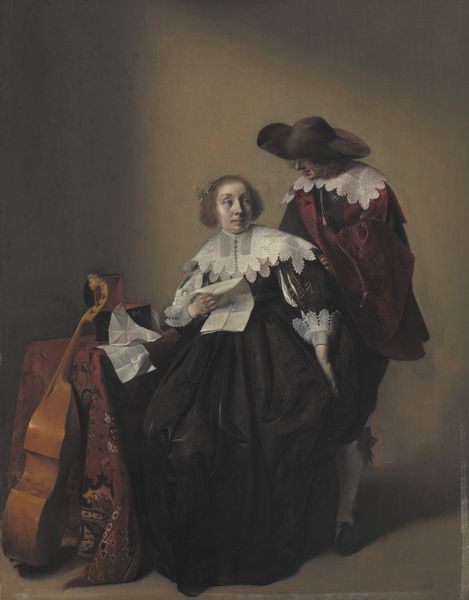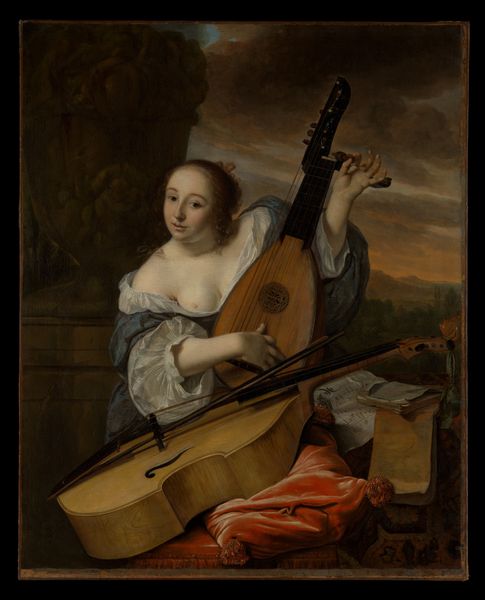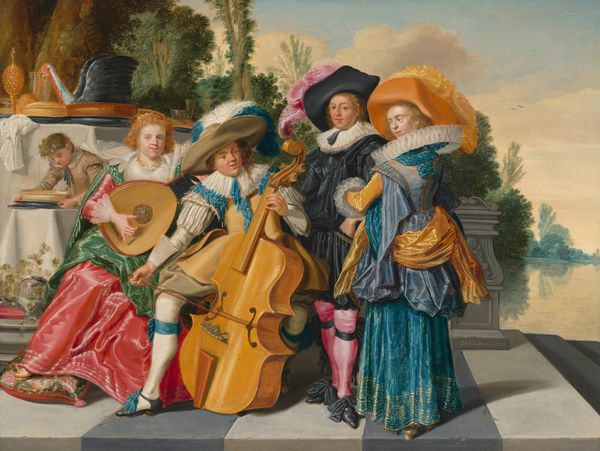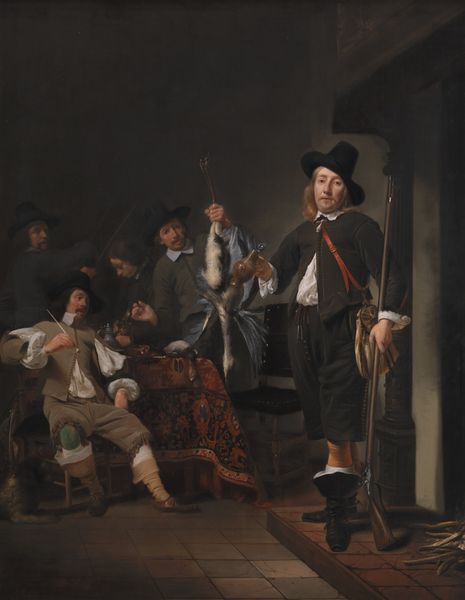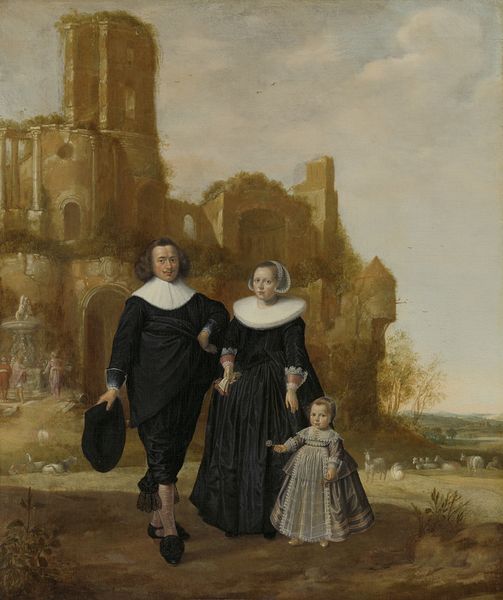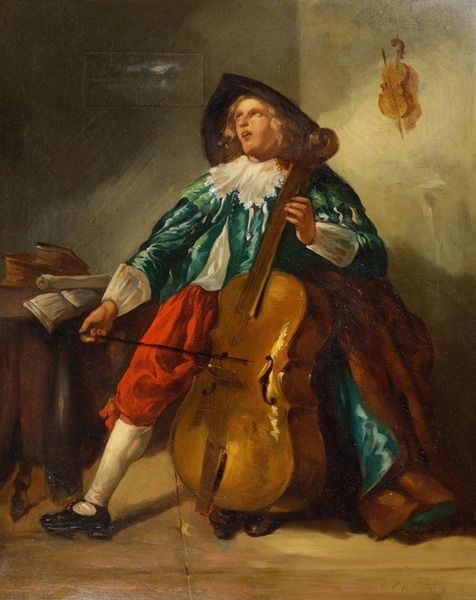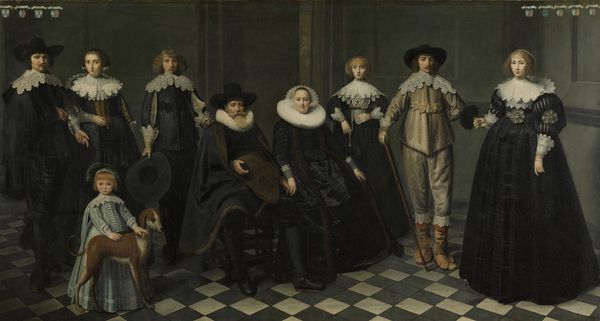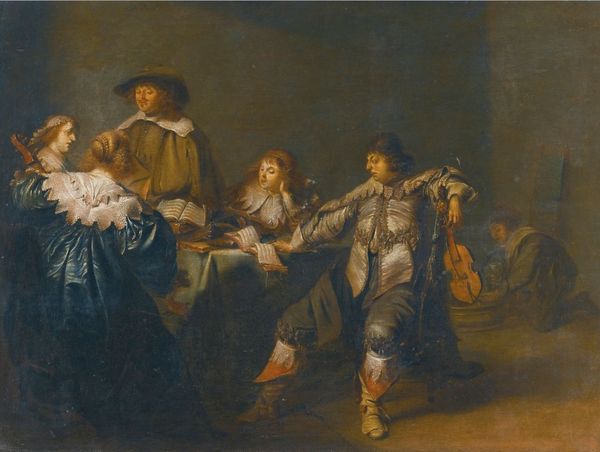
painting, oil-paint
#
portrait
#
baroque
#
painting
#
oil-paint
#
group-portraits
#
men
#
genre-painting
#
portrait art
Dimensions: 29 1/2 x 20 3/4 in. (74.9 x 52.7 cm)
Copyright: Public Domain
Curator: This is "A Musician and His Daughter," painted in 1629 by Thomas de Keyser. It currently resides at the Metropolitan Museum of Art. What are your initial thoughts? Editor: It’s quite striking, particularly the textures. Look at the sheen of the father’s black garments compared to the duller, yet intricately patterned fabric of the daughter’s dress. I'm drawn to the materials used to construct those garments. Curator: Absolutely. De Keyser’s portrait opens a fascinating lens into the social fabric of 17th-century Dutch society, highlighting the significance of music in shaping familial identity. It’s worth exploring the father’s stance, almost mid-performance, and how it reinforces notions of masculinity and artistic expression within a patriarchal structure. Editor: I agree that the father's stance dominates the painting. Note also the placement of his instruments—foregrounded. This wasn't casual, of course; each item had a particular value in trade and in social circles. And I would bet there was a lively market in Amsterdam at the time for the various dyes needed for garments of these types. Curator: Consider the symbolism of the musical instruments as tools for social mobility, but also potentially reinforcing gendered roles. The daughter is presented more passively, symbolizing a woman’s expected decorum versus the father's active creative participation. We could see this piece as an examination of social constraints. Editor: Agreed, it does raise these questions. Still, I want to go back to the craftsmanship of the time. I can imagine the intense labor involved in producing those textiles. And beyond labor—I’m wondering where De Keyser got the paint pigments for such detail and range of expression? It gives the artwork even further depth, realizing that this moment of time was carefully considered not just in setting, but materials too. Curator: A wonderful point; it allows us to broaden the conversation of the subjects presented here within a complex cultural hierarchy. It shows how the construction of social identity, gender dynamics, artistic performance, and material existence are all interconnected and reinforce existing political structures. Editor: Precisely. By understanding the artist’s choices, especially material ones, we can reveal the nuances of the social world he inhabited and, crucially, reveal its power dynamics as well. Curator: A valuable perspective! Thank you. Editor: My pleasure.
Comments
No comments
Be the first to comment and join the conversation on the ultimate creative platform.

